Treating Anxiety Disorders With Therapy
You do not have to live with worry and dread, regardless of whether you suffer from panic attacks, obsessive thoughts, persistent worries, or an incapacitating phobia. Treatment can be beneficial, and for several anxiety disorders, counseling is frequently the most effective option. Because, unlike anxiety medication, anxiety treatment targets more than just the problem’s symptoms. Therapy can help you identify the root reasons for your anxieties and phobias, learn to relax, view circumstances in a less terrifying light, and build more effective coping and problem-solving abilities. Therapy offers you the skills and teaches you how to utilize them to overcome anxiety.
The treatment for anxiety disorders must be adapted to the individual’s symptoms and diagnosis. If you suffer from obsessive-compulsive disorder (OCD), for instance, your therapy will differ from that of a person who requires assistance with anxiety episodes. Additionally, the duration of treatment will depend on the kind and severity of your anxiety problem. However, numerous anxiety treatments are rather brief. According to the American Psychological Association, many individuals see considerable improvement after eight to ten sessions of therapy.
Numerous forms of treatment are used to treat anxiety, but cognitive behavioral therapy (CBT) and exposure therapy are the most common. Each anxiety therapy may be used alone or in combination with others. Anxiety treatment may be administered individually or in groups of individuals with comparable anxiety issues. But the objective is the same: to reduce your worry, quiet your mind, and conquer your worries.
Cognitive-behavioral therapy (CBT) for anxiety
Cognitive-behavioral therapy (CBT) is the most often employed treatment for anxiety disorders. Numerous studies have demonstrated its effectiveness in treating panic disorder, phobias, social anxiety disorder, and generalized anxiety disorder, among other diseases.
CBT targets negative tendencies and distortions in our worldview and self-perception. As the name implies, there are two primary components:
Cognitive therapy investigates the relationship between negative thinking and anxiety.
Behavior therapy studies how you behave and react in anxiety-provoking circumstances.
CBT’s fundamental concept is that our ideas, not external events, determine how we feel. In other words, it is your perspective of the circumstance that decides how you feel, not the issue itself.
Imagine that you have just received an invitation to a large party. Consider three distinct ways of thinking about the invitation, as well as the emotional impact of each.
Clearly, the same incident may elicit vastly diverse emotional responses from various individuals. Our own expectations, attitudes, and beliefs determine the outcome.
Negative methods of thinking contribute to worry and dread in individuals with anxiety disorders. The objective of cognitive-behavioral therapy for anxiety is to recognize and correct these negative thoughts and beliefs. The theory is that if you alter your thoughts, you can alter your emotions.
Thought Challenging In CBT For Anxiety
Thought challenging, also known as cognitive restructuring, is a process in which you replace negative, anxiety-inducing thought patterns with more positive, realistic ones. There are three steps involved:
Recognizing negative ideas. With anxiety disorders, circumstances are misperceived as being more perilous than they actually are. For a person with a fear of germs, for instance, shaking another person’s hand may appear life-threatening. Although it may be obvious that this is an illogical worry, it can be quite difficult to recognize your own irrational fears. One method is to consider what you were thinking prior to experiencing anxiety. Your therapist will provide assistance with this phase.
Confronting bad ideas. Your therapist will show you how to evaluate your anxiety-provoking ideas in the second phase. This entails examining the facts for your frightening ideas, assessing harmful beliefs, and checking the veracity of negative forecasts. Experiments, calculating the benefits and drawbacks of worrying or avoiding the item you dread, and determining the likelihood that what you’re nervous about will actually occur are methods for addressing negative ideas.
By substituting negative ideas with realistic ones. After identifying the unreasonable predictions and negative distortions in your anxious thoughts, you may replace them with more accurate and optimistic ideas. Your therapist may also assist you in formulating reassuring affirmations that you might repeat to yourself while confronting or anticipating a circumstance that causes you to experience extreme anxiety.
How thought challenging works
Consider the following example to comprehend how cognitive behavioral therapy employs thinking challenges. Maria will not travel the train because she is frightened she would pass out and everyone will think she is insane. Her therapist has requested that she record her negative ideas, identify the mistakes — or cognitive distortions — in her thinking, and formulate a more reasonable explanation. The results are displayed below.
- Challenging Negative Thoughts
Negative thought #1: What if I pass out on the subway?
Cognitive distortion: Predicting the worst.
More realistic thought: I’ve never passed out before, so it’s unlikely that I will pass out on the subway.
- Negative thought #2: If I pass out, it will be terrible!
Cognitive distortion: Blowing things out of proportion.
More realistic thought: If I faint, I’ll come to in a few moments. That’s not so terrible.
- Negative thought #3: People will think I’m crazy.
Cognitive distortion: Jumping to conclusions.
More realistic thought: People are more likely to be concerned if I’m okay.
It is difficult to replace negative thoughts with more realistic ones. Frequently, negative ideas constitute a lifelong pattern of thought. Practice is required to break a habit. Because of this, cognitive behavioral therapy often incorporates practice at home.
CBT may also consist of:
- Learning to identify feelings of anxiety and how they manifest in the body.
- The development of coping skills and relaxation strategies to combat anxiety and panic.
- Taking on your fears (either in your imagination or in real life).
Exposure Therapy For Anxiety
Anxiety is an unpleasant feeling, thus it is only logical to avoid it wherever possible. People achieve this in part by avoiding circumstances that cause them anxiety. You could drive three hours out of your way to avoid crossing a big bridge if you have a phobia of heights. Or, if the thought of public speaking makes you queasy, you may choose to forgo your closest friend’s wedding to avoid making a toast. Aside from the inconvenience, suppressing your worries means you will never have the opportunity to overcome them. In actuality, ignoring one’s worries frequently makes them greater.
As its name implies, exposure therapy involves exposing a person to feared events or items. Through repeated exposures, you will develop a greater sense of control over the situation, and your anxiety will decrease. Your therapist may ask you to visualize the frightening circumstance, or you may face it in the actual world. Exposure treatment can be used independently or in conjunction with cognitive-behavioral therapy.
Systematic Desensitization
Instead of immediately confronting your worst fear, which can be traumatic, exposure treatment often begins with a setting that is just somewhat scary and builds up from there. This method is referred to as systematic desensitization. Systematic desensitization enables you to progressively confront your anxieties, develop self-assurance, and acquire methods for managing panic.
Facing a fear of flying
Step 1: Look at photos of planes.
Step 2: Watch a video of a plane in flight.
Step 3: Watch real planes take off.
Step 4: Book a plane ticket
Step 5: Pack for your flight.
Step 6: Drive to the airport.
Step 7: Check in for your flight.
Step 8: Wait for boarding.
Step 9: Get on the plane.
Step 10: Take the flight.
Systematic desensitization involves three parts:
Learning relaxing techniques. The therapist will first instruct you in a relaxation method, such as progressive muscle relaxation or deep breathing. You will practice both in treatment and at home. After addressing your worries, you will utilize this strategy to lessen your bodily anxiety reaction (such as shaking and hyperventilation) and promote relaxation.
Creating a list of steps. Next, you will develop a list of 10 to 20 terrifying circumstances that lead to your ultimate objective. For instance, if your ultimate objective is to conquer your fear of flying, you can begin by viewing photographs of planes and conclude by actually flying. Each phase should have a clear, quantifiable purpose and be as explicit as feasible.
Working through the procedures. Then, under the direction of your therapist, you will begin working through the list. The objective is to remain in each frightening circumstance until your worries fade. Thus, you will learn that the sensations will not harm you and will eventually pass. When the anxiety becomes overwhelming, you will turn to the relaxation method you learned. Once you have regained your composure, you may return your focus to the problem at hand. Thus, you will progress through the stages until you are able to execute each one without excessive anxiety.
Complementary therapies for anxiety disorders
As you examine your anxiety condition in treatment, you may also choose to try complementary therapies meant to reduce your overall stress and promote emotional equilibrium.
Physical activity is a natural stress and anxiety reducer. Research indicates that 30 minutes of exercise three to five times a week can significantly reduce anxiety. Aim for at least one hour of aerobic activity on most days for optimal effect.
Regular use of relaxation techniques such as mindfulness meditation and progressive muscle relaxation can reduce anxiety and boost emotions of emotional well-being.
Biofeedback employs sensors that detect certain physiological processes, such as heart rate, respiration, and muscular tension, to train you to notice your body’s fear reaction and learn to manage it through relaxation techniques.
Hypnosis is occasionally combined with CBT to treat anxiety. While you are in a state of profound relaxation, the hypnotherapist employs a variety of therapeutic approaches to help you confront and reframe your concerns.
Making Anxiety therapy work for you
There is no immediate cure for anxiety. Overcoming an anxiety problem requires time and effort. Therapy entails confronting your concerns as opposed to avoiding them, so you may feel worse before you feel better. Important is to adhere to therapy and your therapist’s recommendations. Remember that treatment for anxiety is quite successful in the long term if you’re feeling disappointed by the pace of your recovery. You will reap the rewards if you persevere.
You may also assist your own anxiety therapy by making good choices. From your exercise level to your social interactions, everything influences anxiety. Set the groundwork for success by consciously promoting relaxation, vigor, and a positive mental perspective in your daily life.
Understand anxiousness. In order to overcome anxiety, it’s vital to grasp the problem. Here is where education comes into play. Education alone will not cure an anxiety illness, but it will enhance the efficacy of treatment.
Develop your relationships with others. Isolation and loneliness lay the setting for anxiety. Reduce your vulnerability by extending your hand to others. Visit friends, join a self-help or support group, or confide in a trustworthy loved one about your fears and concerns.
Adopt a healthy way of living. Regular exercise lowers stress and anxiety, so make time for physical activity. Alcohol and narcotics should not be used to manage anxiety symptoms, and you should avoid stimulants such as caffeine and cigarettes, which can exacerbate anxiety.
Reduce your stress levels. Examine the stress in your life and search for methods to reduce it. Avoid people who make you uneasy, decline additional duties, and schedule fun and relaxation time into your daily routine.
If you want to read more about renewable resources, here’s an article about how to invest in renewable energy.



